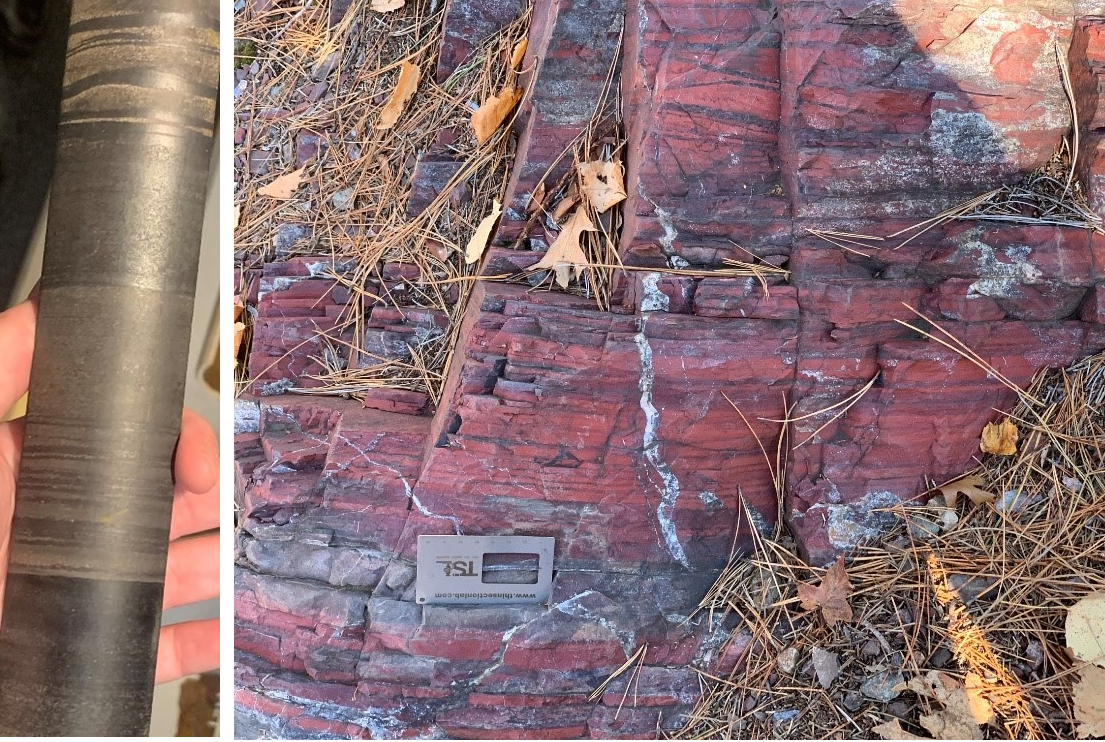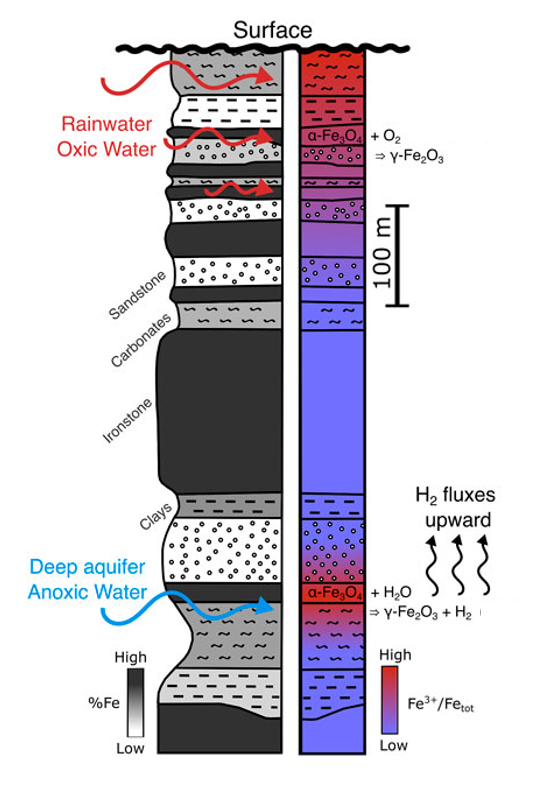05.01.2024
4 minutes of reading
The climate challenges facing humanity are driving research into alternatives to fossil energies and have led to a significant upsurge in interest in the “hydrogen solution” in recent years. Hydrogen is rightly considered to be an energy vector since it has to be produced from other resources (water electrolysis, steam methane reforming, etc.) However, it has now been established that molecular hydrogen (H2) also exists naturally in the form of diffuse or continuous seepage escaping from certain geological formations. Nevertheless, numerous questions remain concerning its origin, the mechanisms leading to its formation and its actual production potential.
Recent collaborative PhD research, conducted as part of a collaborative project by IFPEN, the Paris Institute of Earth Physics and the University of Pau and the Pays de l’Adour, has just highlighted a new mechanism that can explain some of the continental natural hydrogen flows .
The mystery of continental natural hydrogen
In ocean environments, as well as on ocean rock formations that have been uplifted and exposed as a result of plate tectonics (ophiolites), the presence of hydrogen seeps is primarily the result of the oxidation of Fe2+-rich silicate minerals, such as olivine or pyroxene [1, 2]. However, the mystery remains around the intra-continental environment, where these minerals are largely absent. Yet hydrogen flows have been identified in these very environments over the past 10 years: in the vicinity of iron mines located in cratons, ancient continental areas (600 million to over 3 billion years old) in which banded iron formations have been deposited1 (Figure 1).
1 often abbreviated to BIF

Do you know the origin of banded iron formations?
Banded iron formations are sedimentary rocks with an iron content of up to 40%. At the beginning of the Archean period, which lasted from 4 billion to 2.5 billion years ago, the ocean was oxygen-free and contained ferrous iron (Fe2+) in solution. With the oxygenation of the oceans, this ferrous iron was oxidized to ferric iron (Fe3+) and was deposited as layers of iron oxide, such as magnetite (α−Fe3O4) and l'hematite (Fe2O3), alternating with deposits of shale and silicon carbonates. These successive deposits, which are the result of sedimentation under water of variable depth with varying concentrations of oxygen, formed over time, thereby leading to the formation of major iron deposits. Today, more than 80% of iron produced throughout the world, particularly in the USA, Australia, South Africa and Brazil, comes from these deposits.
The key to the mystery: magnetite oxidation
These very old sedimentary formations - some dating back over 2.5 billion years - are rich in magnetite (α-Fe3O4), an iron oxide hitherto considered to be stable in the natural environment. However, laboratory experiments involving the alteration of this oxide at low temperatures (< 100°C) to reproduce the conditions of burial in the earth's crust have revealed significant H2 production in the space of just a few days. This occurred via a total oxidation reaction that had never previously been considered and that, in anoxic conditions, transforms magnetite into maghemite (γ-Fe2O3) :
2 (α−Fe3O4) + H2O -> 3(γ−Fe2O3) + H2
From this, a phenomenological model was developed (Figure 2), to explain the production of this hydrogen at deep underground and its surfacing through permeable rocks.
Whereas in the BIF located at shallow depths maghemite (γ-Fe2O3) develops as a result of the alteration of magnetite (α-Fe3O4) by oxygen-rich surface water, the new mechanism proposed for hydrogen generation at greater depths is based on the alteration of magnetite by anoxic water, resulting in the generation of H2 [3].

Natural hydrogen: what are the prospects as a future energy source?
These findings have major implications for the future exploration of natural hydrogen in continental environments and the estimation of potential flows . They suggest that magnetite-rich sedimentary lithologies, such as BIFs, which are abundant and present on every continent (Figure 3), represent potential target source rocks. They also broaden our understanding of the formation and alteration of iron deposits, paving the way for mining campaigns to produce this new energy resource.

References:
[1] C. Vacquand, E. Deville, V. Beaumont, F. Guyot, O. Sissmann, D. Pillot,, C. Arcilla, A. Prinzhofer (2018). Reduced gas seepages in ophiolitic complexes:Evidences for multiple origins of the H2-CH4-N2 gas mixtures. Geochimica et Cosmochimica Acta, 223, 437-461. https://doi.org/10.1016/j.gca.2017.12.018
[2] V. Zgonnik, (2020). The occurrence and geoscience of natural hydrogen: A comprehensive review. Earth-Science Reviews, 203, 103140. https://doi.org/10.1016/j.earscirev.2020.103140
[3] U. Geymond, T. Briolet, V. Combaudon, O. Sissmann, I. Martinez, M. Duttines, I. Moretti, Reassessing the role of magnetite during natural hydrogen generation, Front. Earth Sci., Sec. Geochemistry, Volume 11 – 2023, https://doi.org/10.3389/feart.2023.1169356
[4] U. Geymond, E. Ramanaidou, , D. Lévy,, A. Ouaya, I. Moretti (2022). Can weathering of banded iron formations generate natural hydrogen? Evidence from Australia, Brazil and South Africa. Minerals, 12(2), 163. https://doi.org/10.3390/min12020163
You may also be interested in
Voir le Replay : Quelle trajectoire pour le déploiement de l’hydrogène dans la transition écologique ?
Natural hydrogen in continental environments: the question of its origin solved
THÈSE DE JULIA GUÉLARD
Natural hydrogen in continental environments: the question of its origin solved
THÈSE DE JULIA GUÉLARD






